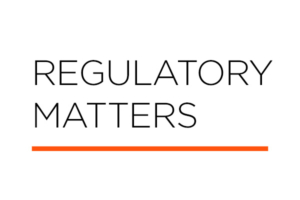
With the stock market remaining volatile, shareholders may be keeping a closer eye on large, lucrative equity transactions made by executives via 10b5-1 plans. The Securities and Exchange Commission (SEC) certainly is. On December 14th, 2022, the SEC adopted amendments surrounding Rule 10b5-1 Insider Trading Plans and the related disclosures, as discussed in our 2021 post covering the initial proposal.
Background
10b5-1 trading plans are intended to eliminate notions of insider trading activity by creating a more systematic approach for executives to buy or sell stock. Most plans are entered by way of a third-party broker, and such plans will detail the number of shares to trade, along with a date and price at which the transaction will occur. Any large insider equity purchases are closely monitored by investors, as they could be taken as a sign that executives suspect upcoming strong stock price performance. By contrast, shareholders may surmise future underperformance when an executive sells off a large portion of stock. The adoption of 10b5-1 plans aid to quell some of the speculation around sizeable executive trading activity and the possible insider information they could be privy to at the time of the trade.
Cooling Off Period
While the original amendment proposal contained a suggested cooling-off period of 120 days to 180 days, the SEC approved a 90-day cooling-off period under Rule 10b5-1. While the SEC Commissioner voted in favor of the 90-day cooling-off period, she still expressed concern that a shorter cooling-off period, such as 30 to 60 days, would more broadly encourage the usage of 10b5-1 plans. Additionally, the proposed amendments would have subjected issuers to the cooling-off period; however, the approved amendments leave issuers exempt from such cooling-off period.
Disclosure
Pertaining to the disclosure of adoptions and cancellations of 10b5-1 plans for officers and directors, Form 4 disclosure was suggested in the proposed amendments, as they could be electronically submitted. The approved amendments will require companies to disclose via Item 408 in 10-Ks or 10-Qs the information surrounding the entrance or termination of a 10b5-1 plan for officers and directors. This should serve to address existing concerns relating to the timing of plan cancellation. Currently, a plan participant may cancel a 10b5-1 plan at any time, even when in possession of material non-public information. This allows an executive participant more confidence within the market than the average shareholder, especially if say the abrupt cancellation of a plan can be tied back to, say, knowledge of the failure of a drug during a clinical test prior to it becoming public knowledge. Such flexibility has the potential to misalign shareholder value and executive interests, and shareholders may not be keen on an executive having substantially less risk when trading.
Disclosure surrounding the 10b5-1 plan will include material information for the plan, such as name and title of director or officer, adoption or termination date, duration of plan arrangement, aggregate number of securities to be sold or purchased pursuant to the plan, and whether the arrangement is intended to satisfy the requirements for use of affirmative defense (if the securities are being sold to satisfy tax withholding requirements). Public companies will be required to disclose whether they have adopted insider training policies and procedures, and such companies will be required to submit such disclosure as an exhibit to their annual report on form 10-K or 20-F. If a company does not adopt such policies or procedures, they will be required to disclose the rationale behind the lack thereof.
Implementation
The required reporting will take into effect in any proxy or information statements in the first filing that covers the first full fiscal period that begins on or after April 1, 2023. Smaller reporting companies, due to the additional disclosure requirements, can defer such disclosure for an additional six months.
The core function of the 10b5-1 rule is to limit insider trading activity and speculation, while allowing executives to be able to trade and sell shares of the company, which in most cases represent a significant portion of their earnings. As the marketplace grows increasingly complex, the proposed modifications to the 10b5-1 plan have the potential to increase accountability by increasing disclosure and transparency for shareholders. Shareholders may view the new rules as a way to limit speculation around possible insider trading activity, and assuage concerns of nefarious actions taken by dodgy executives to line their pockets.
